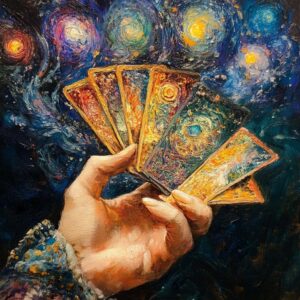
Tarot cards are much more than just a collection of beautiful cards designed for fortune-telling; they serve as a key to personal development. They expose us to spiritual and psychological concepts like balance, peace, equilibrium, and proportion, contrasted with opposing forces and ideas. Sometimes, these concepts align, and the path becomes clearer and more illuminated.
The strength of tarot cards lies in their holistic nature, connecting and balancing various layers of personal and collective existence. The cards engage in a dialogue with one another, and wisdom can be gained by understanding the communication between different cards. Pairings between cards can be found based on visual similarities, and one intriguing pairing is that of the Hierophant and the Devil.
The Hierophant and the Devil represent two sides of the same coin, both embodying the key to spiritual development. Understanding them allows us to solve the great mystery of life and achieve enlightenment. These are two opposing forces: awareness on one side and the absence of awareness on the other, the forces of light and the forces of darkness.
Understanding the power of awareness is crucial in the process of spiritual growth and enlightenment. Both forces are in constant struggle over the progression of human development.
According to Wikipedia, awareness is "the state or ability to perceive, to feel, or to be conscious of events, objects, or sensory patterns." The more aware we are, the better we can use this information for growth.
Enlightenment, as defined by Wikipedia, "is a concept originating in Buddhism that describes the liberation of a person from the eternal cycle of birth and death, which is common in Indian religions. This breaking of the eternal cycle of reincarnation results from a profound (often sudden and immediate) transformation that moves the individual from their normal state to a higher, transcendent state of consciousness, which is the central aim of enlightenment. In recent years, this concept has become widely accepted in New Age literature."
Enlightenment is a state where life is seen through the light, through complete awareness of oneself and the environment, connecting the two.
Just as there are forces that help raise awareness, there are also challenging forces that diminish awareness and obscure the light. When a person succumbs to a challenge, they lose the ability to control and lead their life. Challenging forces appear when one is not in the light, when one is not acting in accordance with their truth.
Life is a process of struggle between good and evil, between light and darkness. While light raises awareness, darkness lowers it. Facing life's challenges increases awareness, while neglect decreases it.
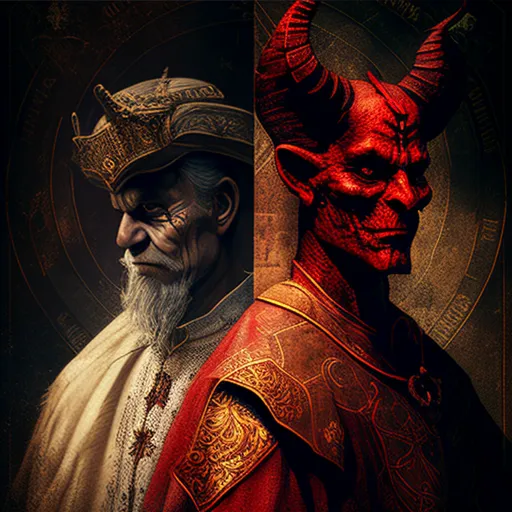
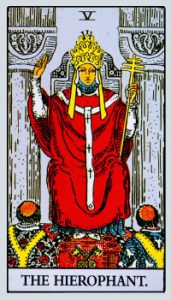
The Hierophant card embodies the principle of learning, self-confidence, and morality through the recognition of values. Life is composed of a series of lessons, external challenges that lead a person to a place of inner learning and spiritual growth. The learning process involves both intellect and logic, as well as the heart and emotions.
The Emperor represents the material father, while the Hierophant is the spiritual father. The Hierophant guides the disciple, transforming them through the process of learning into a teacher. He teaches the disciple to ask questions in order to arrive at the truth.
The disciple learns that truth has a beginning, middle, and end—truth is a wholeness that encompasses the essence of existence and the universe. When truth confronts the disciple, they may turn away from it, or even be angry with it, but deep inside, it resonates, and they cannot ignore it.
The truth, like the teacher, can manifest in many forms—it could be a person, an animal, a billboard, a book, an event, or an inner realization. Once the disciple learns the truth, despite the pain and difficulty, the light of understanding and insight allows the process to continue.
The Hierophant represents the positive forces in life, the forces that initiate growth. A person connected to their inner voice knows how to read the signs on the path to spiritual development.
The Hierophant card signifies a period in which a person finds their path, their purpose—why they came into a physical body. The universe will work to assist the person in fulfilling their purpose. As a saying in Islam goes, "Allah helps those who help themselves."
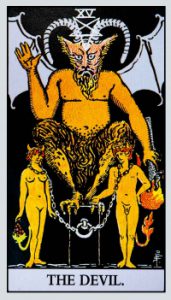
The Devil card represents restriction, fears, and habits. It symbolizes situations of dependence, lack of awareness, failures, and uncontrolled sexuality. This stage confronts the individual with "the dark side of the soul." Throughout human history, various myths have depicted the battle between the forces of light and darkness. The awareness associated with the Devil brings a sense of power and control, an awareness that inflates the ego, which becomes an obstacle on the path to spiritual growth. This awareness can lead a person to be afflicted with hubris (the sin of pride, the desire to emulate God). The individual's task is to recognize these dark, destructive forces and, from a place of awareness, transform them into creative power.
The Devil card represents states of emotional, mental, and spiritual darkness—situations where falsehood, deception, and illusion masquerade as truth, leading to a lack of awareness and confusion. While truth is balanced—with a beginning (Aleph), middle (Mem), and end (Tav) in the Hebrew alphabet—falsehood consists of the three letters before Tav (Shin, Kuf, Resh), bringing one close to the end in a misguided way.
The Devil's messengers, the demons, rise and take control over a person's life. Each individual has their own demons waiting for moments of weakness or stumbling. The Devil represents the negative forces in a person's life. This is the stage where the master confronts and overcomes the Devil within themselves. The Devil presents tests and lessons when a person embarks on a spiritual path, following the process from seeker to disciple to master; only at this stage can one truly confront and overcome their inner Devil.
This card reflects a state of neglect and actions driven by improper motives, addictions, desires, and passions. It is a phase of challenge and testing, where there is a feeling that external forces control one's life. While in the Hierophant card, a person lives in truth and light, in the Devil card, they live in falsehood and darkness. The individual reaches a point in life where, by resisting temptation, they can conquer their inner demons.
The appearance of this card illuminates the fact that a person has the power and choice to overcome, break free, and make a "Nachshon's leap" (referring to Nachshon, who was the first to jump into the Red Sea after it parted, demonstrating his faith in God and becoming a symbol of initiative and pioneering in Jewish history)—a leap of awareness.
In conclusion, whether receiving the Hierophant card or the Devil card, in both cases, the guidance is to seek the light. This can be achieved either through positive forces that stimulate processes of growth or through warnings not to succumb to ego and hubris, transforming primal forces into creative energies.
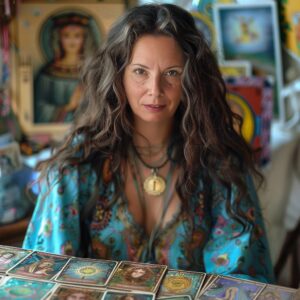
Orit Raphael, Tarot Reader for Personal Guidance, Insights, and Messages